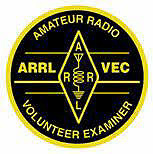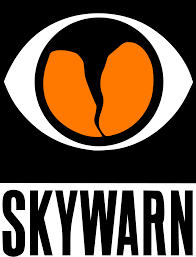Types of nets:
|
Open Net |
Stations call each other and directly pass traffic. A typical example would be a Tactical Net or our Stand-By Weather Nets. |
|
Directed Net |
Stations only call Net Control directly. Passing of traffic is controlled by Net Control station. |
How a directed net works
A directed net has an active Net Control station who coordinates traffic. The ARES/EMCOMM net is an example of a directed net. Stations wishing to deliver a message or pass information would first call Net Control, and when acknowledged, make your request. Net Control will then coordinatethe passing of traffic or announcement. We'll have a demonstration of traffic passing on a future net.
Some tips on Net Control
- Should have strong signal strength whenever possible. Stations don't need to be straining to make out what net control is saying.
- Manages resources. Most emergency nets will have liaisons to other nets, such as the National Weather Service, Statewide ARES net, or the National Traffic System (NTS) net. Net Control should keep track of what liaison stations are available and the identity of the station and assign liaisons when necessary.
- Assign Tactical Calls. Tactical call signs are useful when operators may rotate during a longer deployment. Tactical calls may be "Welcome Center Shelter", "Villa Rica Fire Station", etc. The responding station would respond with "Net Control, this is WX4BK at Welcome Center Shelter".
- Keep a good log. This is the key to knowing the status of the various stations and liaisons.
- Speak Clearly. Net Control stations should have a clear speaking voice and try to control the tone and volume level of their voice.
- Can handle Stress. Being Net Control can be hectic and tiring. It's amazing how fast an hour can go by and how frazzled you can get during operations when things are moving quickly.
- Can handle distractions. Seldom do we have the luxary of a quiet and calm environment during an emergency. Net Control stations, in particular, need to be able to listen and respond in noisy or hectic environments.
- Writes legibly. Something I have to work at. You have to be able to read that call sign later on!
- Use plain English. This is true for everyone, really. Avoid the use of Q-codes or "10" codes. Not everyone knows them and, especially in the case of "10" codes, don't always mean the same thing everywhere.
- Use standard phonetics. The ITU recognizes a standard set of phonetics. While it's sometimes fun to play with the phonetics, it has little place on the net. One commonly misused phonetic is "K" or "Kilo". Some will use "Kilo-Watt". The problem here is operators will often take that as a KW.
- Perform welfare checks. If it has been a while since a station has communicated on the net, go ahead and put a call out for them to ensure they are still on the air.
- Be familiar with your radio. Some radios are quite simile to operate and some have buttons with two, three, or even for different functions assigned to them. Make sure you know how operate that radio in case some setting is accidentally toggled.
- Regularly identify the net. Identifying the net and why the net is operating tells other stations they shouldn't pass casual traffic (unless it is a stand-by net). It may also induce stations to participate when they may be of help, such as Weather Nets.
- Transmits facts. Avoid guessing or conjecture. This is really true for all stations, but particularly the Net Control station.
- Take a break. Nets can be hectic and we all need to nourish ourselves or take a bathroom break. When circumstances permit hand the net over to another station and take some time to recuperate.
- Take a breath. This is another one everyone should follow. Key up, take a breath, and then talk. Repeaters take a fraction of a second to detect your signal and begin retransmitting. In addition, many radios require a fraction of a second before they begin transmitting. It is very common to only hear an operator calling out and only catching "mobile" or the last letter or two of their call sign. Keying up and taking a breath ensures the repeater is retransmitting your words




